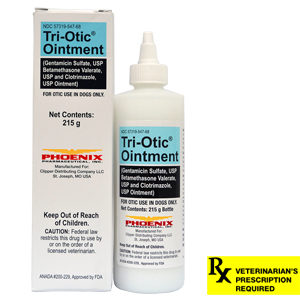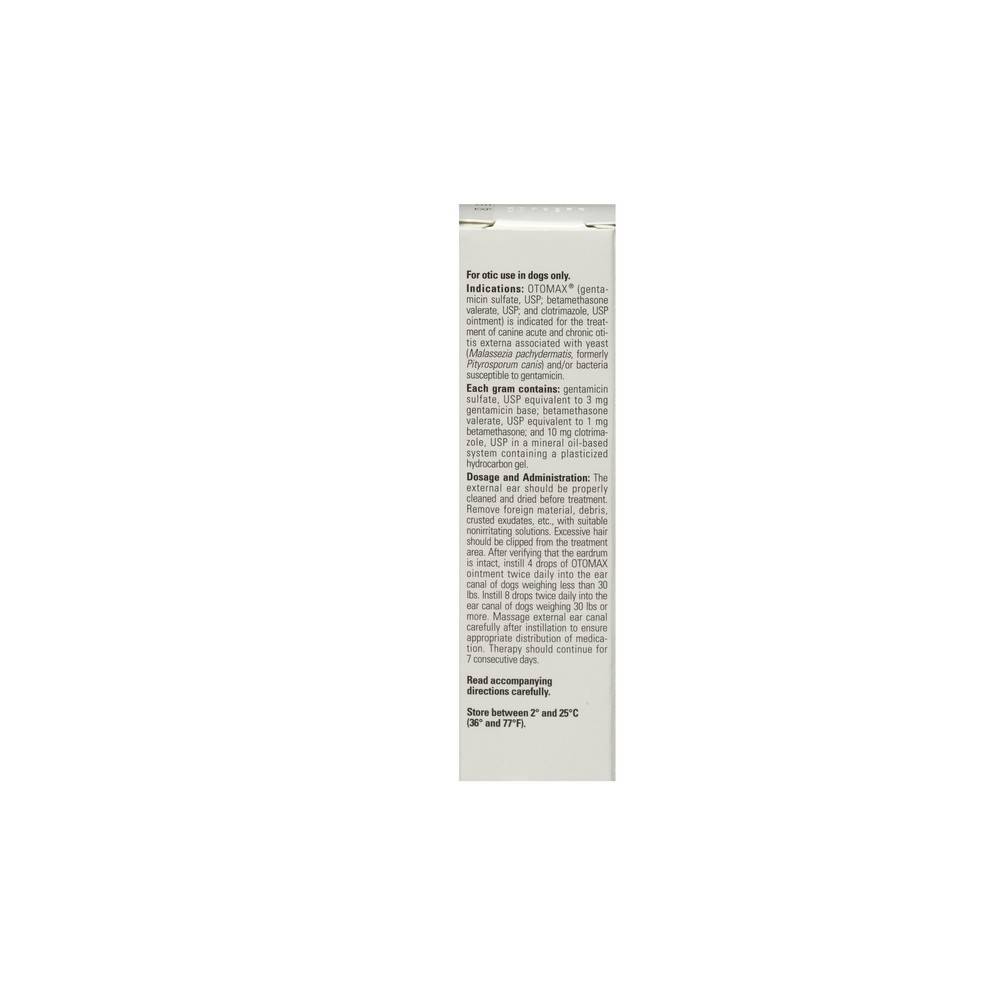
Otomax is made by Merk Animal Health and was the original prescribed product we had received to treat both the bacterial and fungal ear infection.

It has the same active ingredients and proportion of ingredients as Otomax, however it is less expensive. It controls bacteria and fungus, and is an anti-inflammatory. The ingredients are gentamicin sulphate, betamethasone valerate, and clotrimazole and they are mixed in a mineral oil paste. Otibiotic is made by VetUS ( Henry Schein Animal Health) and comes in a 15g tube, with instructions to administer 5 drops in the ear each day, for 14 days. The five medications I have at home to treat my dogs ear infections are: Prescription If your pet prescription requires refills, you might as well save a stop and get them at the same time as your prescriptions (if any), or your groceries! If you know you have a prescription coming your way from the vet, it is helpful to call the grocery store pharmacy to check their pricing to ensure you don’t overpay at the vet. I have found that often my grocery store pharmacy can order pet prescriptions. When the non-prescription products don’t work after a few days, then a trip to the vet is necessary. Infected ears can be uncomfortable for your dog, both because of the irritation in their ear canal, but also excessive scratching can cause cuts and increase the redness, as they attempt to scratch the itch away.įrom time to time I have had to treat ear infections in my dog at home and found the following to be helpful to treat both kinds. WebMD says the main contributing factors of ear infections are: ear mites, excessive hair, moisture or wax, foreign bodies, allergies, and hypothyroidism. Not adequately drying or airing out ears after swimming, or exploring overgrown areas outdoors can expose your dog to the contributing causes of ear infections. Infections generally fall into two categories bacterial, or yeast. This step is not usually required before Mometamax is prescribed.While the title of this post isn’t that appealing, ear infections are common for many floppy-ear dog breeds such as shih tzu, poodle, pit bull, cocker spaniel, and Shar Pei. Baytril for dogs is another antibiotic that can be effective if certain bacteria types are responsible for the infection, but this drug usually requires testing to identify the cause before being prescribed. There are other prescription medications that may be prescribed if the exact cause of the infection is known, but Mometemax can be effective against many organisms so testing may not be required.


Mometamax for dogs will resolve the infection whether it is caused by bacteria or fungi, and the anti inflammatory component helps eliminate inflammation that can cause pain and irritation. A dog ear infection home remedy may provide temporary relief of the symptoms, but this type of treatment will not eliminate the underlying cause of the infection. This medication combines the antibiotic gentomyacin sulfate with the anti fungal clotrimazole and the anti inflammatory mometasone, and is very effective in treating almost all cases of ear infection in canines. The medication is only needed once each day, so giving the treatment to your pet is convenient. Your vet may prescribe Mometamax for dogs to ensure that the responsible organisms are effectively treated.

Mometamax for dogs is considered a broad spectrum treatment, and it is very effective against a number of organisms that can cause an infection in your dog’s ear.Įar infections in dogs are not difficult to treat, but some medications only address a limited range of bacterial or fungal causes, and will not work well for others. Mometamax otic suspension contains a trio of drugs which are intended to treat a wide range of infections and conditions, so it is a common treatment for dogs that have irritation or an infection in the ear. This medicine may also be prescribed to reduce the amount of inflammation present, so that any pain and swelling are relieved. Mometamax for dogs is a prescription only medication, and it is prescribed to treat bacterial and fungal infections in the ear.


 0 kommentar(er)
0 kommentar(er)
